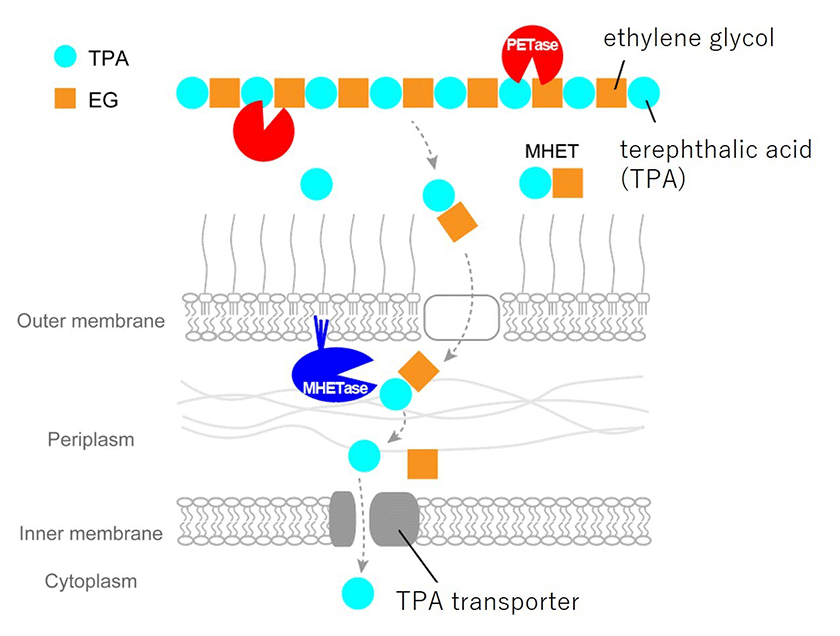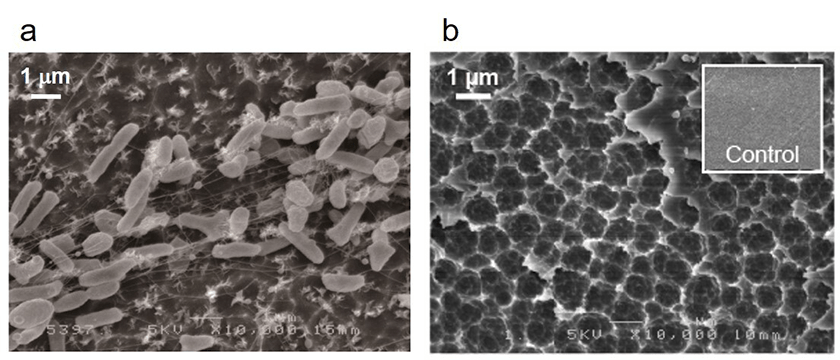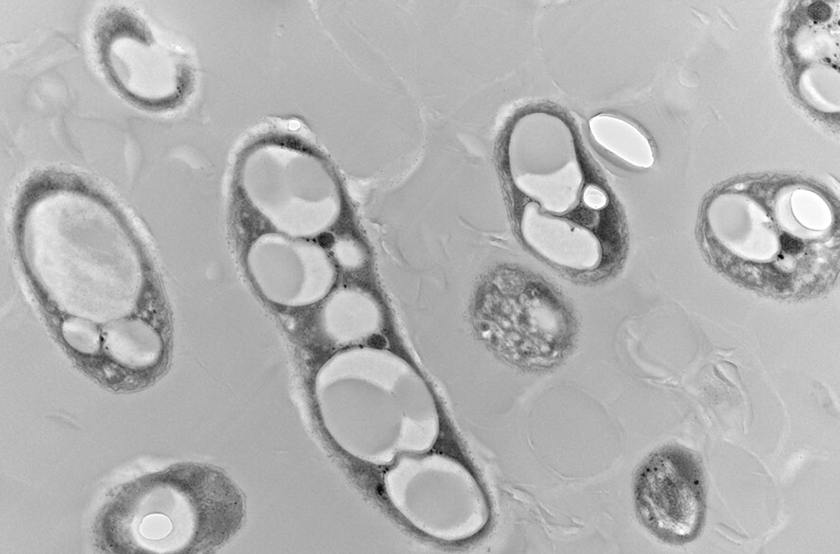2023.03.01
Bacterial poly(ethylene terephthalate) metabolism and its applications
Environmental Microbiology・ Professor ・ Shosuke Yoshida
Plastics are highly functional and cost-effective materials with various uses. However, the current plastics economy is petroleum-based, which is less circulating. In addition, plastics that leak into the environment accumulate without being degraded by microorganisms, destroying landscapes and adversely affecting living organisms. In this situation, we discovered a bacterium, Ideonella sakaiensis, which can degrade and assimilate poly(ethylene terephthalate) (PET). In this review, I introduce the identification of the I. sakaiensis enzymes to understand the PET degradation mechanism and the valued compounds production using the PET metabolism of this bacterium.

Fig 2. Predicted PET metabolism of I. sakaiensis
PET is degraded by extracellularly secreted PETase to mainly release MHET, which is introduced into the periplasmic space and rapidly hydrolyzed by MHETase to terephthalic acid and ethylene glycol. I. sakaiensis has both terephthalic acid and ethylene glycol metabolisms.
Shosuke Yoshida NAIST Edge BIO, e0010. (2023).


